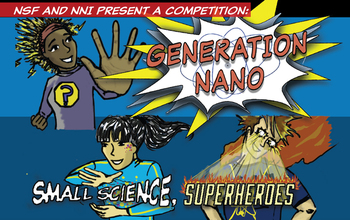Dear Minister of Science Kirsty Duncan and Minister of Science, Innovation and Economic Development Navdeep Bains,
Thank you both. It’s been heartening to note some of the moves you’ve made since entering office. Taking the muzzles off Environment Canada and Natural Resources Canada scientists was a big relief and it was wonderful to hear that the mandatory longform census was reinstated along with the Experimental Lakes Area programme. (Btw, I can’t be the only one who’s looking forward to hearing the news once Canada’s Chief Science Officer is appointed. In the fall, eh?)
Changing the National Science and Technology week by giving it a news name “Science Odyssey” and rescheduling it from the fall to the spring seems to have revitalized the effort. Then, there was the news about a review focused on fundamental science (see my June 16, 2016 post). It seems as if the floodgates have opened or at least communication about what’s going on has become much freer. Brava and Bravo!
The recently announced (June 29, 2016) third assessment on the State of S&T (Science and Technology) and IR&D (Industrial Research and Development; my July 1, 2016 post features the announcement) by the Council of Canadian Academies adds to the impression that you both have adopted a dizzying pace for science of all kinds in Canada.
With the initiatives I’ve just mentioned in mind, it would seem that encouraging a more vital science culture and and re-establishing science as a fundamental part of Canadian society is your aim.
Science education and outreach as a whole population effort
It’s facey to ask for more but that’s what I’m going to do.
In general, the science education and outreach efforts in Canada have focused on children. This is wonderful but not likely to be as successful as we would hope when a significant and influential chunk of the population is largely ignored: adults. (There is a specific situation where outreach to adults is undertaken but more about that later.)
There is research suggesting that children’s attitudes to science and future careers is strongly influenced by their family. From my Oct. 9, 2013 posting,
One of the research efforts in the UK is the ASPIRES research project at King’s College London (KCL), which is examining children’s attitudes to science and future careers. Their latest report, Ten Science Facts and Fictions: the case for early education about STEM careers (PDF), is profiled in a Jan. 11, 2012 news item on physorg.com (from the news item),
Professor Archer [Louise Archer, Professor of Sociology of Education at King’s] said: “Children and their parents hold quite complex views of science and scientists and at age 10 or 11 these views are largely positive. The vast majority of children at this age enjoy science at school, have parents who are supportive of them studying science and even undertake science-related activities in their spare time. They associate scientists with important work, such as finding medical cures, and with work that is well paid.
“Nevertheless, less than 17 per cent aspire to a career in science. These positive impressions seem to lead to the perception that science offers only a very limited range of careers, for example doctor, scientist or science teacher. It appears that this positive stereotype is also problematic in that it can lead people to view science as out of reach for many, only for exceptional or clever people, and ‘not for me’. [emphases mine]
Family as a bigger concept
I suggest that ‘family’ be expanded to include the social environment in which children operate. When I was a kid no one in our family or extended group of friends had been to university let alone become a scientist. My parents had aspirations for me but when it came down to brass tacks, even though I was encouraged to go to university, they were much happier when I dropped out and got a job.
It’s very hard to break out of the mold. The odd thing about it all? I had two uncles who were electricians which when you think about it means they were working in STEM (science, technology,engineering, mathematics) jobs. Electricians, then and now. despite their technical skills, are considered tradespeople.
It seems to me that if more people saw themselves as having STEM or STEM-influenced occupations: hairdressers, artists, automechanics, plumbers, electricians, musicians, etc., we might find more children willing to engage directly in STEM opportunities. We might also find there’s more public support for science in all its guises.
That situation where adults are targeted for science outreach? It’s when the science is considered controversial or problematic and, suddenly, public (actually they mean voter) engagement or outreach is considered vital.
Suggestion
Given the initiatives you both have undertaken and Prime Minister Trudeau’s recent public outbreak of enthusiasm for and interest in quantum computing (my April 18, 2016 posting), I’m hopeful that you will consider the notion and encourage (fund?) science promotion programmes aimed at adults. Preferably attention-grabbing and imaginative programmes.
Should you want to discuss the matter further (I have some suggestions), please feel free to contact me.
Regardless, I’m very happy to see the initiatives that have been undertaken and, just as importantly, the communication about science.
Yours sincerely,
Maryse de la Giroday
(FrogHeart blog)
P.S. I very much enjoyed the June 22, 2016 interview with Léo Charbonneau for University Affairs,
UA: Looking ahead, where would you like Canada to be in terms of research in five to 10 years?
Dr. Duncan: Well, I’ll tell you, it breaks my heart that in a 10-year period we fell from third to eighth place among OECD countries in terms of HERD [government expenditures on higher education research and development as a percentage of gross domestic product]. That should never have happened. That’s why it was so important for me to get that big investment in the granting councils.
Do we have a strong vision for science? Do we have the support of the research community? Do we have the funding systems that allow our world-class researchers to do the work they want do to? And, with the chief science officer, are we building a system where we have the evidence to inform decision-making? My job is to support research and to make sure evidence makes its way to the cabinet table.
As stated earlier, I’m hoping you will expand your vision to include Canadian society, not forgetting seniors (being retired or older doesn’t mean that you’re senile and/or incapable of public participation), and supporting Canada’s emerging science media environment.
P.P.S. As a longstanding observer of the interplay between pop culture, science, and society I was much amused and inspired by news of Justin Trudeau’s emergence as a character in a Marvel comic book (from a June 28, 2016 CBC [Canadian Broadcasting Corporation] news online item),
The variant cover of the comic Civil War II: Choosing Sides #5, featuring Prime Minister Justin Trudeau surrounded by the members of Alpha Flight: Sasquatch, top, Puck, bottom left, Aurora, right, and Iron Man in the background. (The Canadian Press/Ramon Perez)
Make way, Liberal cabinet: Prime Minister Justin Trudeau will have another all-Canadian crew in his corner as he suits up for his latest feature role — comic book character.
Trudeau will grace the variant cover of issue No. 5 of Marvel’s “Civil War II: Choosing Sides,” due out Aug. 31 [2016].
Trudeau is depicted smiling, sitting relaxed in the boxing ring sporting a Maple Leaf-emblazoned tank, black shorts and red boxing gloves. Standing behind him are Puck, Sasquatch and Aurora, who are members of Canadian superhero squad Alpha Flight. In the left corner, Iron Man is seen with his arms crossed.
“I didn’t want to do a stuffy cover — just like a suit and tie — put his likeness on the cover and call it a day,” said award-winning Toronto-based cartoonist Ramon Perez.
“I wanted to kind of evoke a little bit of what’s different about him than other people in power right now. You don’t see (U.S. President Barack) Obama strutting around in boxing gear, doing push-ups in commercials or whatnot. Just throwing him in his gear and making him almost like an everyday person was kind of fun.”
The variant cover featuring Trudeau will be an alternative to the main cover in circulation showcasing Aurora, Puck, Sasquatch and Nick Fury.
It’s not the first time a Canadian Prime Minister has been featured in a Marvel comic book (from the CBC news item),
Prime Minister Pierre Trudeau in 1979’s Volume 120 of The Uncanny X-Men. (The Canadian Press/Marvel)
Trudeau follows in the prime ministerial footsteps of his late father, Pierre, who graced the pages of “Uncanny X-Men” in 1979.
The news item goes on to describe artist/writer Chip Zdarsky’s (Edmonton-born) ideas for the 2016 story.
h/t to Reva Seth’s June 29, 2016 article for Fast Company for pointing me to Justin Trudeau’s comic book cover.



